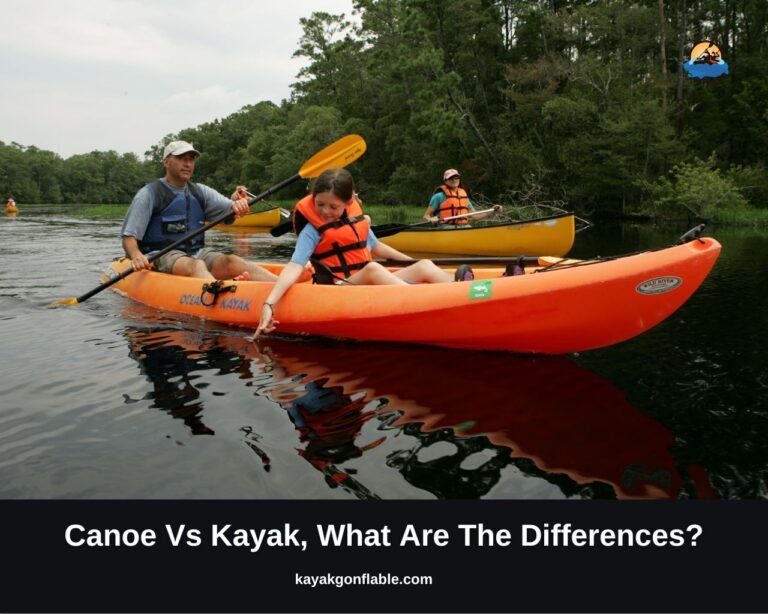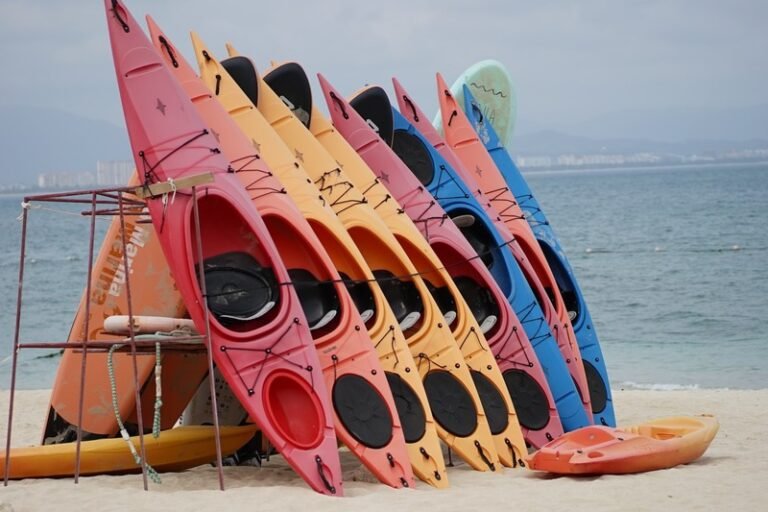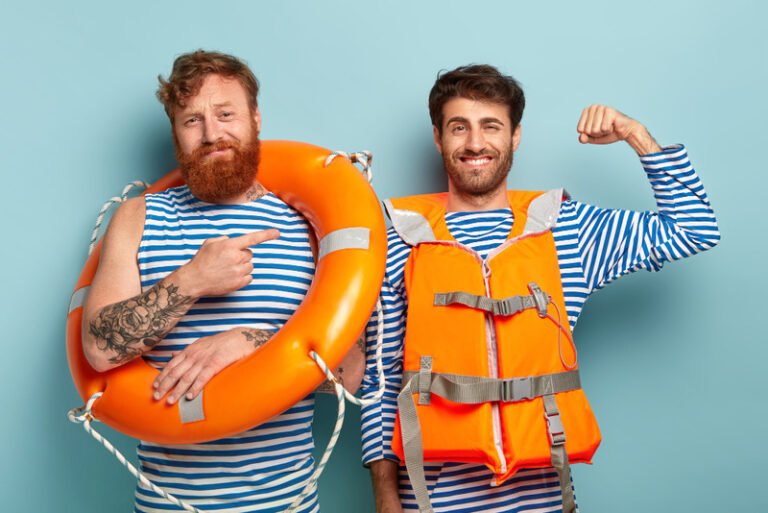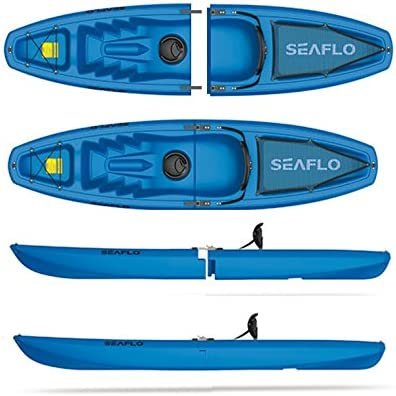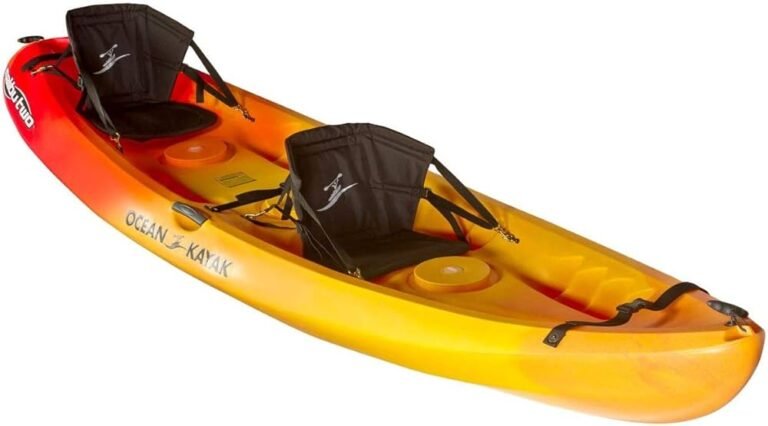What is a Tandem Kayak?
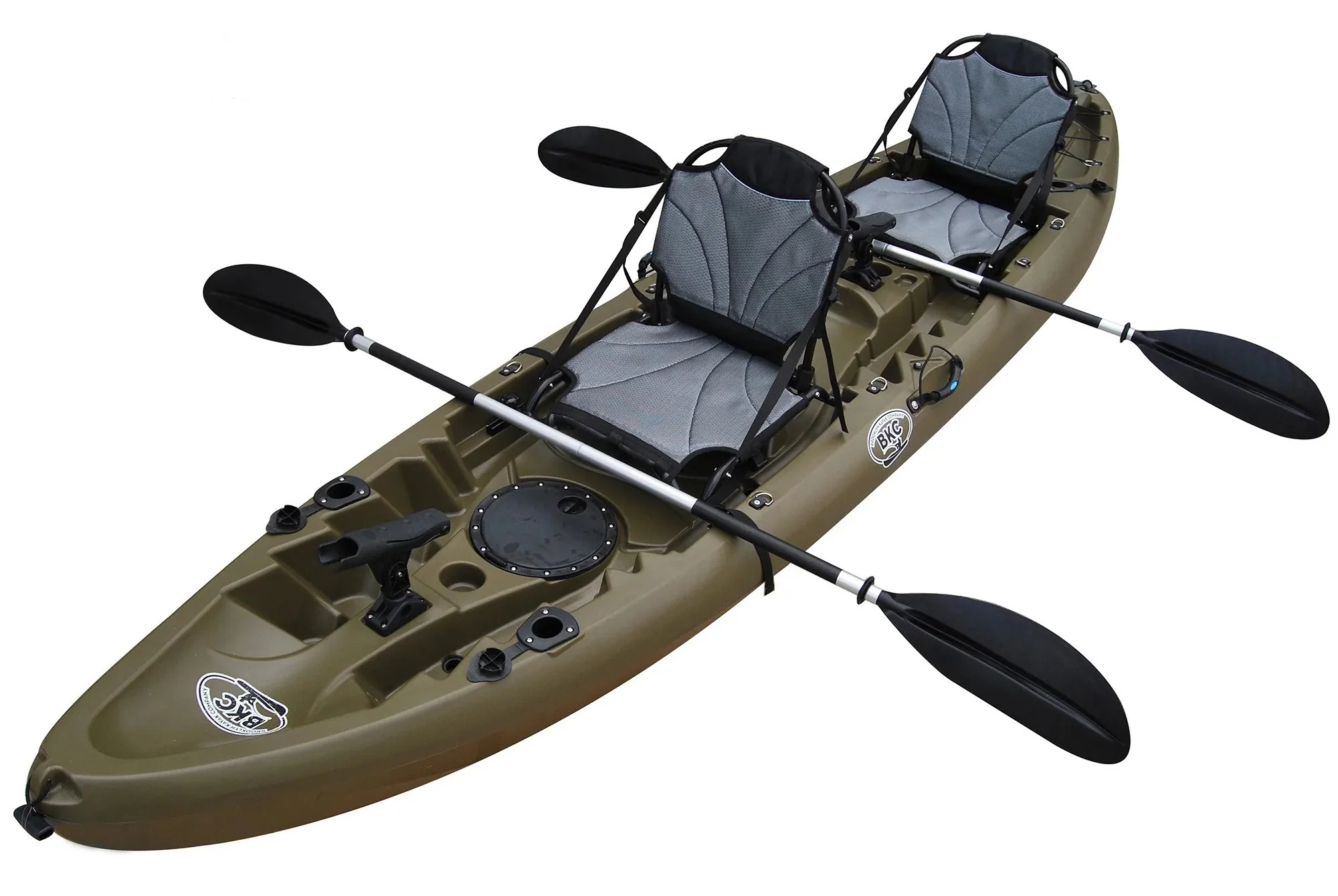
If you’re looking for an adventure that blends teamwork, nature, and a little bit of challenge, kayaking is one of the most exciting outdoor activities you can try. Kayaking is a versatile sport that comes in many forms, from serene lake paddles to intense white-water rafting. For those who love the idea of sharing the experience with a friend or loved one, the tandem kayak is the perfect choice.
A tandem kayak, also known as a double kayak, is a specialized type of kayak designed for two paddlers. Unlike traditional solo kayaks, which are designed for a single person, tandems feature a longer hull to accommodate two individuals comfortably. It’s built to accommodate two people in a single vessel, allowing you to paddle together, coordinate your movements, and enjoy the water side by side.
Whether you’re new to kayaking or looking to level up your experience, this guide will provide you with everything you need to know about tandem kayaks. From choosing the right one to learning the basics of paddling as a team, we’ve got you covered.
How Tandem Kayaks Work
Paddling in Sync
A tandem kayak functions differently than a solo kayak. You must paddle together at all times. When you both paddle simultaneously, the tandem kayak speeds up. Compared to a solo kayak, tandem kayak speed is high, especially when you both paddle in unison.
Paddling in unison also helps to avoid paddle collisions. The proximity of the paddlers within the kayak can also cause you to hit your partner’s paddle, causing you to lose sync. As a result, you should always time your strokes.
Who Controls The Rhythm?
The paddler in the front controls the rhythm. If you sit in front, you have control over the rhythm. Because you can’t see your partner behind you, but they can see your movements more clearly. Your partner should follow your paddling movements from the back.
When you’re in the lead, make sure your movements are quick, concise, and even. Notify your partner when you need to steer the kayak.
Otherwise, you’ll all lose your balance, and everything will be a mess! You should also let your travel companion decide and suggest your route. Don’t be selfish!
Are You the Experienced Paddler? Sit at the Back
You should sit in the back if you are an experienced or strong partner. You can easily change the pace as a skilled or physically strong kayaker by sitting in the back. You’ll also be able to track their strokes easily.
Paddling for an extended period can also exhaust your partner. Especially newbies. They’ll certainly want to take a break. When you’re strong enough, you’ll take control of the boat. You must continue paddling, which is simple while sitting in the back.
Turning A Tandem Kayak
Turning a tandem is more complex than turning a solo kayak. But the best thing about having you two on a tandem kayak is that you only need to work together. Communicate.
Even if your partner is new to the team, communicate with them so they can learn what they need to do. With both of you knowing what to do, the boat will be much easier to control. What is the best way to turn your tandem? Who is in the front row? You? Fine.
If you’re sitting in the front, perform a forward sweep on one side while your partner does a reverse sweep on the other. And all at the same time. You’ll turn the kayak swiftly, especially when it’s stationary.
A Tandem kayak also has a rudder that you can use to turn. The rudder keeps the boat on course without needing extra, energy-draining corrective strokes. But it is less used when you’re working as a team.
What Materials Are Tandem Kayaks Made of?
These kayaks are made using different materials, each offering its own unique advantage in terms of durability, weight, and performance. Some common materials used in the construction of tandem kayaks include:
- Fiberglass: Fiberglass kayaks are known for being lightweight and having excellent performance. They provide a good balance between weight and durability, making them a preferred choice for those seeking efficiency in their tandem kayaks.
- Polyethylene (PE): PE is a popular choice for its durability and affordability. Kayaks made from polyethylene are rugged and can withstand bumps and scrapes. The only downside? They tend to be heavier than other materials.
- Inflatable (PVC or Hypalon): Inflatable tandems are highly portable and easy to store. They are typically made from PVC or Hypalon materials, which are rugged and resistant to punctures. While they may not offer the same performance as hard-shell kayaks, they excel in terms of convenience and transportability.
- Composite Materials (Carbon, Kevlar): Composite tandems are the lightest and often the most expensive. They offer exceptional strength-to-weight ratios, making them popular among serious paddlers and enthusiasts.
Pros of Tandem Kayaks
Tandem kayaks offer a variety of benefits that enhance the paddling experience, making them a top choice for those seeking to share the adventure with a partner. Whether you’re a seasoned kayaker or a first-timer, the advantages of tandem kayaks are undeniable.
Teamwork and Shared Experience
One of the standout features of tandem kayaks is the opportunity for teamwork and collaboration. When paddling together in a tandem kayak, both paddlers need to be in sync to move efficiently. This shared experience can foster:
- Communication: Effective communication between paddlers is key to achieving smooth coordination. You’ll often find that paddling in tandem builds a connection, as you both work toward a common goal.
- Cooperation: Each paddler plays a vital role in propelling the kayak forward, requiring cooperation to maintain speed, direction, and balance.
- Bonding: Whether you’re with a family member, friend, or partner, tandem kayaking provides a unique bonding experience. Sharing the thrill of paddling and working together to navigate the water can bring people closer and strengthen relationships.
Increased Power and Efficiency
With two paddlers working together, tandem kayaks provide a significant advantage when it comes to power and efficiency:
- More Power: Two paddlers generate more force than one, meaning that you’ll have greater propulsion. This makes it easier to travel longer distances or maintain higher speeds with less effort from each individual.
- Faster Speeds: Tandem kayaks often allow for faster paddling, especially when both paddlers are in sync. Whether you’re racing to your destination or just enjoying the water at a quicker pace, the combined power makes it easier to move through the water efficiently.
Size & Stability
Tandem kayaks are typically longer and wider than their single counterparts. This extra length and width not only provide more space for two paddlers but also improve the kayak’s stability on the water, making it easier to balance and control. Tandem kayaks are generally more stable than solo kayaks due to their longer length and wider build:
- Increased Stability: The added length and width help distribute the weight of two paddlers more evenly, providing a steadier platform on the water. This makes them an excellent choice for beginners or anyone looking for a more stable experience, especially in calm or slightly choppy waters.
- Balance: Tandem kayaks are less likely to tip over compared to solo kayaks, even in conditions where a solo kayaker might struggle with balance.
Cost-Effective (Compared to Two Single Kayaks)
For those paddling as a pair, tandem kayaks offer a more budget-friendly option than purchasing two separate kayaks:
- Lower Cost: Buying a tandem kayak is often more affordable than purchasing two individual kayaks. This is especially beneficial for families or couples looking to share a kayak without breaking the bank.
- Value for Money: Considering that tandem kayaks often come with more features and can carry more gear, they provide great value when compared to the cost of two single kayaks.
Shared Load
Tandem kayaks make it easier to distribute the load between two paddlers, reducing individual effort and stress:
- Even Gear Distribution: With tandem kayaks, you have the benefit of sharing gear, equipment, and supplies, making it easier to pack for longer trips without overburdening one person. The load can be divided to ensure that each paddler carries a manageable weight, contributing to better balance and performance.
- Less Physical Strain: Since the workload is split between two paddlers, tandem kayaks make it easier to paddle for longer periods without exhausting one person.
Capacity
Tandem kayaks typically offer a higher maximum weight capacity compared to solo kayaks, allowing for more gear or larger paddlers:
- Higher Weight Capacity: Tandem kayaks can accommodate more weight, which is ideal for carrying additional camping gear, fishing equipment, or other supplies needed for longer trips.
- Versatility in Use: The increased weight capacity allows tandem kayaks to serve multiple purposes, from family outings to extended touring expeditions, without sacrificing comfort or safety.
Cons of Tandem Kayaks
While tandem kayaks offer many advantages, they also come with their own set of challenges. These kayaks, designed for two paddlers, require more coordination, and can sometimes be less versatile than their single counterparts.
Coordination Required
Tandem kayaking is all about teamwork, and for that, effective coordination is crucial:
- Synchronized Paddling: To make the kayak move smoothly and efficiently, both paddlers need to be in sync. A lack of coordination can result in uneven strokes, reduced speed, and even loss of direction. This means both paddlers must communicate well and practice together to achieve a unified rhythm.
- Learning Curve: For new paddlers or people who aren’t used to working together in such a way, it may take time and practice to master synchronized paddling. Beginners might struggle with getting the timing right, which can affect the overall experience.
Less Maneuverable than Single Kayaks
Tandem kayaks are typically larger and more stable than solo kayaks, but this size comes at the cost of maneuverability:
- Reduced Agility: Due to their extended length and wider design, tandem kayaks are not as quick to turn or respond to sudden movements as single kayaks. This can be a downside when navigating tight spaces, such as around rocks or through narrow waterways.
- Challenges in Rough Waters: While they provide stability, the size of tandem kayaks can make them harder to maneuver in fast-moving or turbulent waters. Solo kayakers have more control over their vessel’s movement, while tandem kayakers may find themselves needing to work harder to navigate.
Potential for Conflict
While tandem kayaking promotes bonding, it can also bring out some tension:
- Disagreements Between Paddlers: Differences in paddling experience, expectations, or communication styles can lead to conflict. If one paddler feels that the other is not pulling their weight or is out of sync, it can create frustration. It’s important to establish clear communication and mutual respect before heading out on the water.
- Personality Clashes: For those who are not used to working closely together, personalities can sometimes clash, and this can affect the overall paddling experience. Having an open and flexible attitude is key to ensuring a smooth, enjoyable time.
Transportation and Storage
Transporting and storing tandem kayaks can be more difficult than dealing with single kayaks:
- Bulkier Size: Tandem kayaks are generally heavier and bulkier than single kayaks. This can make loading and unloading them from a vehicle more challenging, especially for those without a kayak rack or helpers.
- Storage Space: Storing a tandem kayak requires a larger space, which can be an issue for people with limited storage options. Not only do they take up more room, but their size and weight can make them harder to handle in tight spaces.
- Transport Accessories: In some cases, specialized transport equipment like roof racks or trailers may be necessary to properly move a tandem kayak, which could add to the overall cost and effort.
Weight Limits
Although tandem kayaks generally offer a higher weight capacity than single kayaks, it’s essential to consider the limits:
- Maximum Weight Capacity: Every tandem kayak comes with a specified weight limit, which includes both paddlers and any gear or supplies they carry. Exceeding this limit can affect the kayak’s performance, stability, and safety.
- Uneven Weight Distribution: If one paddler is significantly heavier than the other, it can affect the balance and handling of the kayak. Even distribution of weight between the two paddlers is crucial to ensure optimal performance and comfort.
Types of Tandem Kayaks
When choosing the right tandem kayak, it’s important to understand the variety of options available. Different types of tandem kayaks cater to different needs and experiences on the water. Let’s break down the key types of tandem kayaks, highlighting their unique features, pros, and cons to help you find the best fit for your adventures.
Sit-in Tandem Kayaks
In sit-in tandem kayaks, paddlers sit inside the hull, typically enclosed by a cockpit that offers a snug fit. These kayaks provide more protection from the elements, including wind, water, and splashes.
Pros:
- Better Performance in Colder Waters: The enclosed cockpit helps keep paddlers warmer, making these kayaks ideal for cooler climates or colder water.
- More Control in Rough Conditions: The hull design provides enhanced stability, offering better control in choppy or rough waters.
- Drier Ride: Since the cockpit protects paddlers from splashes, this type of kayak keeps you relatively dry compared to sit-on-top kayaks.
Cons:
- Challenging to Re-enter After Capsizing: If you fall overboard, getting back into a sit-in tandem kayak can be difficult, especially without assistance.
- Less Storage Space: The cockpit’s design limits the amount of space available for gear, and storage is often less convenient than in sit-on-top models.
Sit-on-Top Tandem Kayaks
Sit-on-top tandem kayaks allow paddlers to sit on top of the hull rather than inside it. These kayaks often have self-bailing scupper holes that allow water to drain out automatically.
Pros:
- Easy Entry and Exit: Getting in and out of a sit-on-top kayak is much easier, making them ideal for beginners or for people who plan to get in and out of the kayak frequently.
- Self-Bailing Design: The scupper holes allow water to drain out, keeping the kayak dry and minimizing the need for manual bailing.
- More Storage Space: These kayaks generally provide more open deck space for storing gear or carrying supplies.
- Great for Warm Weather: The open design makes them excellent for warm climates, offering a more relaxed, open-air paddling experience.
Cons:
- Less Protection from the Elements: The open design means paddlers are more exposed to the weather, which can be uncomfortable in colder conditions.
- Less Stable in Rough Conditions: Due to their lighter weight and open structure, sit-on-top kayaks can be less stable, especially in rougher waters or windy conditions.
Inflatable Tandem Kayaks
Inflatable tandem kayaks are made from durable, high-quality materials that can be inflated and deflated, making them highly portable and easy to store when not in use.
Pros:
- Highly Portable: These kayaks are easy to deflate, roll up, and store in compact spaces, making them perfect for those who need a portable watercraft.
- Affordable: Generally, inflatable tandem kayaks are more budget-friendly than their hard-shell counterparts, making them an excellent option for those new to the sport or casual paddlers.
Cons:
- Less Durable: While inflatable kayaks are sturdy, they can still be prone to punctures and may not hold up as well over time as hard-shell models.
- Performance May Be Affected: The kayak’s performance can vary depending on how fully it’s inflated, and it may not offer the same speed or stability as a hard-shell tandem kayak.
Fishing Tandem Kayaks
Designed specifically for fishing, fishing tandem kayaks come equipped with various features that make them ideal for anglers, such as rod holders, extra storage compartments, and stable platforms for casting.
Pros:
- Optimized for Fishing: These kayaks offer features like rod holders, tackle box storage, and even mounting options for fish finders, making them the perfect choice for anglers.
- Increased Comfort and Convenience: With features like adjustable seats and spacious storage areas, these kayaks are built for longer days on the water and added comfort.
Cons:
- More Expensive: Due to their specialized design and features, fishing tandem kayaks tend to be pricier than standard recreational models.
- Limited Versatility: While they excel at fishing, fishing kayaks may not be as versatile for other types of paddling, like touring or recreational use.
Touring/Sea Kayaking Tandems
Touring or sea kayaking tandems are built for long-distance trips, designed to handle longer excursions with features like rudders, ample storage compartments, and efficient hull designs.
Pros:
- Excellent Performance for Long-Distance Paddling: With a sleek hull and design optimized for speed, these kayaks are perfect for covering long distances on the water.
- Ample Storage for Gear: The large storage compartments allow for extended trips, providing space to carry camping gear, food, and other essentials.
Cons:
- Typically More Expensive: Due to their high-quality design, these kayaks are often the most expensive.
- Requires Paddling Experience: Touring kayaks are built for more advanced paddlers and require skill and knowledge to handle effectively, especially in open water or strong currents.
Choosing a Tandem Kayak
When it comes to choosing the right tandem kayak, there’s no one-size-fits-all solution. Your choice will depend on a range of factors, from how you plan to use the kayak to your budget and the type of water you’ll be paddling in. In this section, we’ll break down the key considerations to help guide you in selecting the perfect tandem kayak for your needs.
1. Intended Use
Before you start shopping, it’s important to define how you plan to use the tandem kayak. There are different kayaks tailored to various activities, and selecting one that aligns with your goals will make all the difference.
- Recreational Kayaking: If you’re planning casual paddling in calm lakes or rivers, a basic recreational tandem kayak will likely do the trick. These kayaks are typically more affordable, easier to handle, and offer a comfortable, stable experience for leisurely trips.
- Fishing: If you’re a pair of anglers, look for tandem kayaks specifically designed for fishing. These will include features such as rod holders, built-in storage compartments for gear, and wider hulls for extra stability when casting.
- Touring and Expeditions: If you’re planning longer journeys or multi-day trips, you’ll want a tandem kayak built for touring. These models have more efficient hulls, ample storage for gear, and often include rudders to help with steering on long trips.
2. Type of Water
Where you plan to kayak plays a huge role in choosing the right tandem kayak:
- Calm Lakes and Rivers: For calm, slow-moving waters, a wider, more stable kayak is usually ideal. Look for a tandem kayak that offers comfort and stability without the need for specialized features.
- Ocean or Sea Kayaking: If you’re planning to venture into the ocean or more challenging conditions, you’ll need a kayak that can handle rough waters. Touring and sea kayaks typically have sleeker, more efficient designs, along with added features like rudders for improved control in open water.
3. Partner Considerations
Your kayaking experience is just as dependent on your paddling partner as it is on the kayak itself. Consider the following:
- Size and Weight: Make sure the kayak can comfortably accommodate both you and your partner’s size and weight. Tandem kayaks typically have higher weight capacities than solo kayaks, but it’s important to stay within those limits for optimal performance.
- Skill Level and Abilities: If one of you is a more experienced kayaker, you may need to consider kayaks that offer more control and maneuverability for a skilled paddler while ensuring the less experienced partner feels comfortable and stable.
4. Budget
Tandem kayaks come in a range of prices, from budget-friendly models to high-end, specialized kayaks. The price depends on several factors, such as materials, features, and brand.
- Entry-Level Models: These are typically made from durable plastic and are great for casual paddling. They’re often the most affordable, but they may lack advanced features or premium construction.
- Mid-Range Models: If you’re looking for better performance, comfort, and durability, consider mid-range models made from fiberglass or composite materials. These kayaks are often a good balance between affordability and quality.
- High-End Models: For serious touring, fishing, or expedition kayakers, the best option is often a composite or inflatable kayak with advanced features like rudders, ample storage, and premium comfort. Expect to pay a premium for these types of kayaks.
5. Materials
Kayak materials affect both performance and durability. Here’s a quick breakdown:
- Plastic: Durable and affordable, plastic kayaks are popular for recreational and casual paddling. They are resistant to scratches and dents, but they can be heavier than composite kayaks.
- Fiberglass and Composite: These materials are lightweight and offer excellent performance, making them ideal for touring or sea kayaking. They’re more expensive but provide great speed and handling.
- Inflatable: These kayaks are portable and easy to store, making them perfect for those who have limited storage space or need to transport their kayak without a roof rack. However, they may not perform as well in rough waters as hard-shell kayaks.
6. Size and Weight
The size and weight of your tandem kayak will affect its portability and storage:
- Storage and Transportation: Consider how you’ll transport the kayak. Tandem kayaks are generally larger and heavier, so make sure you have the proper vehicle (like a roof rack or trailer) to transport it. If storage is limited, look for a kayak that’s easy to deflate (in the case of inflatable models) or a compact design.
- Weight Capacity: Tandem kayaks are built to carry the weight of two paddlers, but make sure the kayak’s weight capacity matches your combined weight and any gear you’ll bring along.
7. Features to Look For
Different tandem kayaks come with a variety of features designed to improve comfort, performance, and convenience:
- Rudders and Skegs: These are useful for steering, especially in larger bodies of water or when paddling long distances. If you’re going on a multi-day trip or sea kayaking, a kayak with a rudder system might be ideal.
- Storage Compartments: For long trips or fishing, having ample storage is key. Look for kayaks with large compartments or waterproof hatches where you can stow your gear.
- Seating Comfort: Long hours of paddling require comfortable seats. Adjustable or padded seats can improve your comfort, and it’s worth looking for a kayak with supportive seating for both paddlers.
8. Trying Before Buying
If possible, test paddle different tandem kayaks before making your final decision. While specifications and reviews can provide guidance, the real test is how the kayak feels on the water:
- Test Paddle: Take the kayak for a spin to check its stability, comfort, and maneuverability. This will also help you assess how easy it is for both paddlers to work together.
- Compatibility with Your Partner: It’s important that both you and your partner feel comfortable in the kayak. Make sure both paddlers can easily reach the paddles, adjust seating, and maneuver the kayak.
Anatomy of a Tandem Kayak
Hull: The hull is the kayak’s body, the part that comes into contact with the water. It determines the kayak’s stability, speed, and maneuverability. Tandem kayaks can have different hull shapes, such as flat-bottomed for stability or V-shaped for better tracking and speed.
- Length: Tandem kayaks are typically longer than single-seat kayaks, ranging from 17 to 24 feet or more. The increased length enhances stability and speed.
- Width: The width of the hull affects stability. Tandem kayaks tend to be wider than solo kayaks, which enhances stability but may slightly compromise speed.
Cockpit: The cockpit is the seating area where paddlers sit. In tandems, there are two separate cockpits, one for each paddler. The design and layout of the cockpits can vary depending on the kayak’s purpose.
- Seating: Tandems have two separate seating areas, each equipped with a seat for a paddler. These seats may have adjustable backrests and padded cushions for comfort during extended paddling sessions.
Deck: The deck is the top part of the kayak that covers the hull. It often includes features like storage hatches, bungee cords for securing gear, and handles for easy carrying.
Footrests or Foot Pegs: These are adjustable footrests inside the cockpit that provide a point of contact for the paddlers’ feet. Properly adjusted footrests aid in maintaining balance and support efficient paddling strokes.
Skeg or Rudder: Many tandems are equipped with a skeg or rudder system to aid in steering. These components can be controlled by one or both paddlers to maintain a straight course or navigate effectively.
Storage Hatches: Tandem kayaks often have multiple storage hatches built into the deck. These watertight compartments allow paddlers to store gear, clothing, and supplies securely.
Tandem Kayaking Guide
Tandem kayaking opens up a world of adventure and connections. Whether you’re embarking on this journey with a partner, friend, or family member, proper preparation and techniques are essential for a safe and enjoyable experience.
Important Prep For Your Adventure
Safety Considerations
Safety should always be a top priority when kayaking. Here are some essential safety considerations:
- Life Jackets: Ensure that both paddlers wear properly fitting and Coast Guard-approved life jackets at all times.
- Communication: Establish clear and effective communication between paddlers. Discuss hand signals or verbal cues to coordinate strokes and maneuvers.
- Float Plan: Let someone on shore know your planned route and estimated return time.
- Weather Check: Check the weather forecast before heading out, and be aware of changing weather conditions on the water.
- Paddle Responsibly: Respect local regulations, navigation rules, and wildlife. Avoid disturbing sensitive habitats.
Gear and Equipment Needed
Before you hit the water, make sure you have the following gear and equipment:
- Your Tandem Kayak: Ensure your kayak is in good condition, with no leaks or structural issues.
- Paddles: You’ll need two paddles, one for each paddler. Choose paddles of appropriate length and type (e.g., touring, whitewater, or recreational) for your intended activity.
- life jackets: As mentioned earlier, wear properly fitting and approved life jackets.
- Safety Gear: Pack essentials like a whistle, a bilge pump or sponge to remove water from the kayak, a first aid kit, and a rescue rope.
- Navigation Tools: Carry a map, compass, or GPS device to help you navigate if you’re exploring unfamiliar waters.
- Dry Bags: Use dry bags or containers to keep your gear, clothing, and valuables dry.
- Sun Protection: Wear sunblock, sunglasses with UV protection, and a wide-brimmed hat to shield yourself from the sun.
How To Launch Your Tandem Kayak
Launching your kayak can be tricky, but with practice, it becomes second nature. Here are some useful steps to follow:
- Prepare the Kayak: Ensure all gear is secured, and the kayak is properly loaded with even weight distribution.
- Launch Site: Find a gentle and stable shoreline for launching. Avoid steep banks or rocky areas that may cause accidents.
- Enter The Kayak: Both paddlers should stand on either side of the kayak, holding the paddle horizontally across the kayak to provide stability.
- Push Off: Gradually push the kayak into the water while stepping in. Sit down one at a time, ensuring stability before starting to paddle.
How To Tandem Kayak: Basic Paddling Techniques
Proper paddling techniques are essential for an efficient and enjoyable kayaking experience. Here are some basic techniques to keep in mind:
- Synchronize Your Strokes: Coordinate your paddling strokes with your partner to maintain a straight course. Communication is key to achieving synchronization.
- Steering: If your kayak is equipped with a rudder or skeg, discuss how to control it with your partner. Usually, one paddler manages the steering while the other focuses on propulsion.
- Maintain Posture: Sit with your back straight and knees bent. Use your core muscles for paddling power rather than just your arms. Keep a relaxed grip on the paddle.
- Avoid Overexertion: Paddling in tandem should be a harmonious effort. Avoid paddling too forcefully, as this can lead to fatigue and discomfort.
- Practice Maneuvers: Familiarize yourselves with basic maneuvers like turning, stopping, and reversing. Practice these in calm waters before attempting more challenging environments.
Proper Kayaking Etiquette
Proper etiquette is not only a matter of courtesy but also essential for safety and environmental conservation. Here are some etiquette guidelines for kayakers:
- Right of Way: When sharing the water with other vessels, understand the right of way rules and adhere to them. Generally, slower-moving vessels yield to faster ones.
- Maintain Distance: Keep a respectful distance from other kayakers, and boats. Avoid approaching too closely, as it can be disruptive and potentially dangerous.
- Pack Out What You Bring: Practice “Leave No Trace” principles. Do not litter or leave any trash behind. Bring back everything you bring with you.
- Respect Wildlife: Observe wildlife from a distance without disturbing them. Avoid approaching nesting birds, seals, or other animals.
- Minimize Noise: Keep noise levels to a minimum. Excessive noise can disturb wildlife and disrupt the tranquility of the natural environment.
- Stay Informed: Be aware of any local regulations or specific rules for the waterway you’re kayaking on. Some areas may have specific restrictions or guidelines.
Distinguishing Tandem Kayaks from Other Multi-Person Boats
While tandem kayaks may seem similar to other multi-person watercraft like canoes or double kayaks, there are key differences:
- Tandem Kayaks vs. Canoes: Canoes are typically wider and have a more open design, with seats that often allow for paddling from a kneeling or sitting position. Unlike tandem kayaks, which have a more enclosed cockpit and require double-bladed paddles, canoes use a single-bladed paddle and offer more room for gear and passengers.
- Tandem Kayaks vs. Double Kayaks: The term “double kayak” is sometimes used interchangeably with “tandem kayak,” but the difference lies in the design and paddling experience. Tandem kayaks generally refer to sit-in kayaks, where paddlers sit inside the vessel, while double kayaks may also refer to sit-on-top kayaks, where paddlers sit on the deck. Both types, however, serve the same purpose, paddling together, but their design variations offer different comfort levels and handling characteristics.
- Tandem Kayaks vs. Other Multi-Person Watercraft: Other multi-person boats like rowboats or pedal boats have a different design and method of propulsion. Rowboats and pedal boats require different forms of movement, whereas tandem kayaks are specifically designed for the efficient use of paddles, maximizing speed and maneuverability with teamwork.
Tandem kayaks offer a unique and rewarding experience for paddlers, combining the power of teamwork with increased stability, efficiency, and the ability to explore a variety of waters. With features such as dual cockpits, ample storage, and the option to accommodate different materials and designs, they are built for versatility and comfort.

